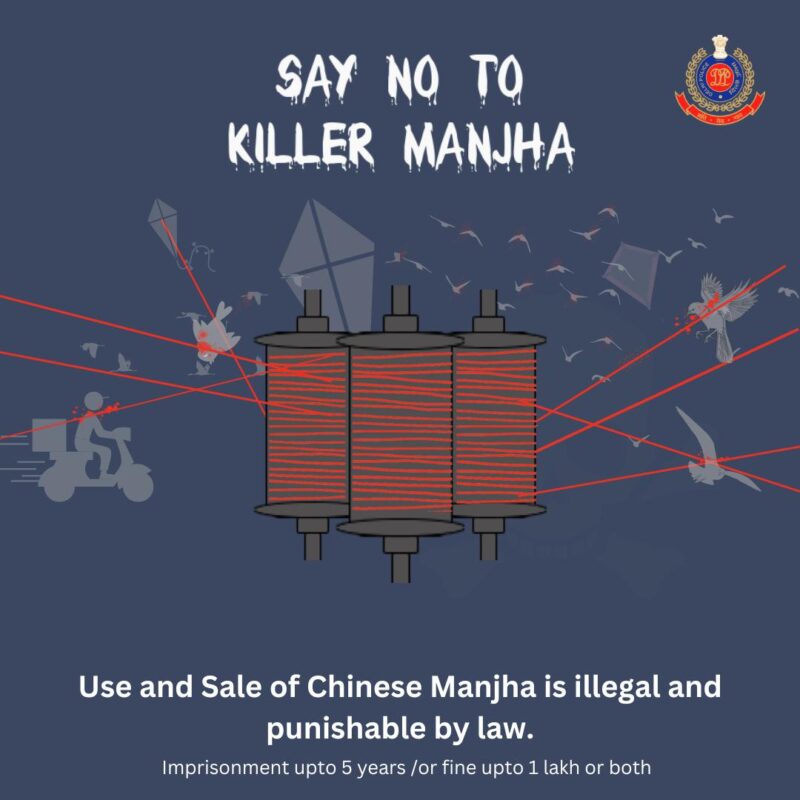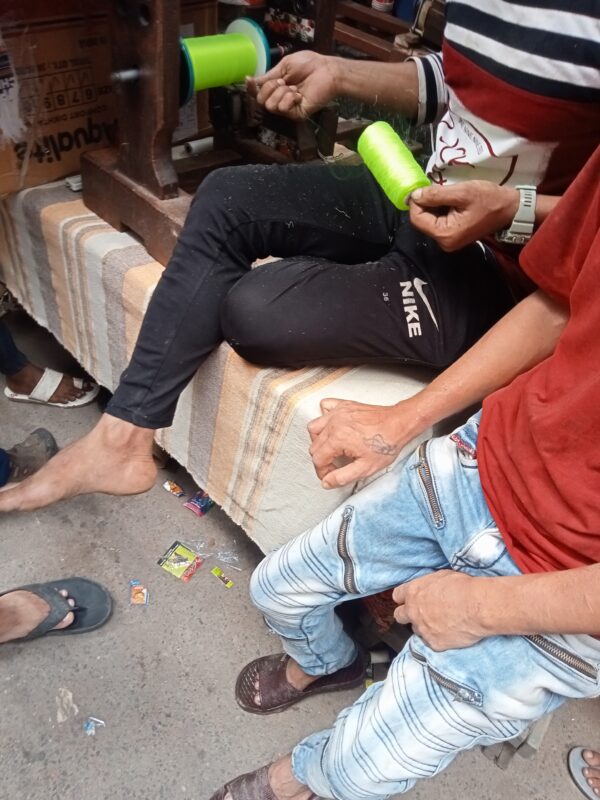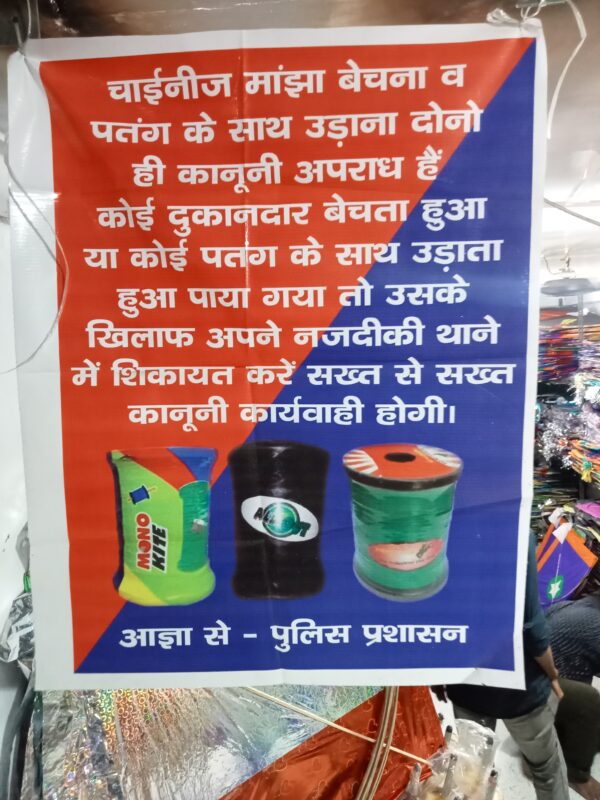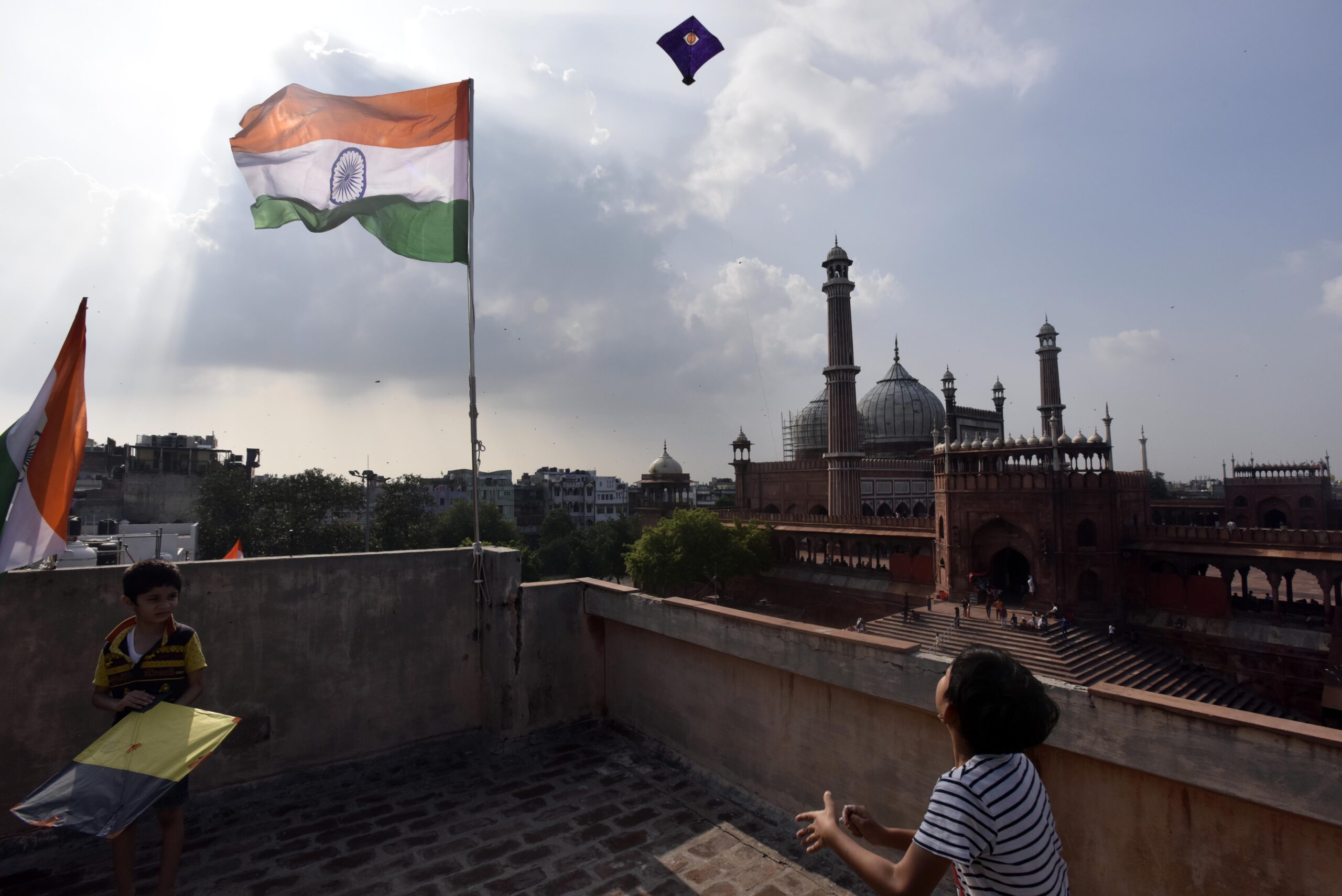Chinese manjha, a glass-coated kite-string made of nylon and other synthetic materials, is one of the major concerns every year during August when Delhiites indulge in kite-flying festivals.
The string has proven fatal for many people, especially two-wheeler riders. Birds and animals also get injured and killed.
In August 2022, at least five people died due to the string while 11 sustained injuries.
This year, a 7-year-old died in Paschim Vihar’s Guru Harikishan Nagar after her throat got slit by the manjha. The victim was sitting on the front part of her father’s motorcycle.
Police have increased vigilance this year to avoid fatal injuries.
“We have created many awareness programmes in the city. We are creating awareness through community FMs, print, and social media. Moreover, police personnel in local police stations are making public announcements about it,” said Suman Nalwa, the deputy commissioner of police (public relations).
Delhi Police is also conducting surprise visits to markets known to sell kites during the season.

So far, a total of 56 cases have been registered by the north district police in connection with sale of Chinese manjha between July 20 and August 5, according to a report in Hindustan Times.
North Delhi has become the hotspot for the sale of Chinese manjha in August as it houses major markets such as Sadar Bazar, which see people from across the city purchase articles during festivals, including kites.
A total of 258 cases have been registered in the Capital so far and data will be recorded till August 15 — Independence Day.
In 2022, a total of 271 cases were registered.
According to the National Green Tribunal judgement of 2017, the term “Chinese” is used to describe threads made of nylon/metallic/synthetic threads. In reality, the string is predominantly manufactured in Uttar Pradesh’s Bareilly – which is famous for its manjha and kites – and in parts of Madhya Pradesh. The manjha was banned by the Delhi government the same year.
Mohammad Ghayas, general secretary of the Kite Flying Association, Delhi, said that the police surveillance and enforcement is stricter this year.
“I have seen that in old Delhi, police are vigilant. They are very active this year and I have come across fewer cases where the manjha is sold openly as compared to last year,” he said.

Ghayas also alleged that the manjha is being sold online and he has come across many videos where sellers outside Delhi are posting about the manjha to be delivered in the city.
When questioned about it by the police, they said that they have not come across any such incidents on the ground where the manjha was obtained online. Patriot also contacted the sellers Ghayas alleged to be selling the manjha online. But they denied stocking it.
Nevertheless, the dangers of the killer string still looms in the national capital due to its lethal results and few possibilities of precautionary measures.
Health activist and physician Dr Dhruv Chauhan, who has handled multiple cases of injuries caused by Chinese manjha, said that these types of cases are “outside precautionary measures”.
“Even if you are driving [two-wheelers] at the minimum speed, the manjha will cut into the neck. Also, this manjha is not clearly visible so you can’t really see it even if you are driving slowly. What must be done is the laws should be enforced strictly and both users and sellers should be punished as per the law,” he said.
Dr Geet Mohania, former presidential candidate of Indian Medical Association (student wing), said that two-wheeler riders can use a shield in front of the vehicle to avoid accidents.
“One can also wrap their neck with a cloth but it won’t be much effective unless there are multiple layers,” he said.

Describing the injuries caused by the kite-flying string, Chauhan explained, “The manjha‘s nylon composition allows it to make deep cuts. The exposed area while riding a two-wheeler is primarily the neck. This area, housing the sensitive jugular vein and arteries, can be fatally affected by cuts. Severing these vessels leads to significant blood loss, resulting in hypovolemia—a condition marked by substantial blood loss. Unfortunately, the patient often succumbs to excessive blood loss before the arteries and veins can be repaired. This is the major reason for deaths. The injured can, however, survive if major veins are not cut.”
He also said that in some cases, the injuries are so deep that they slit the windpipe.





